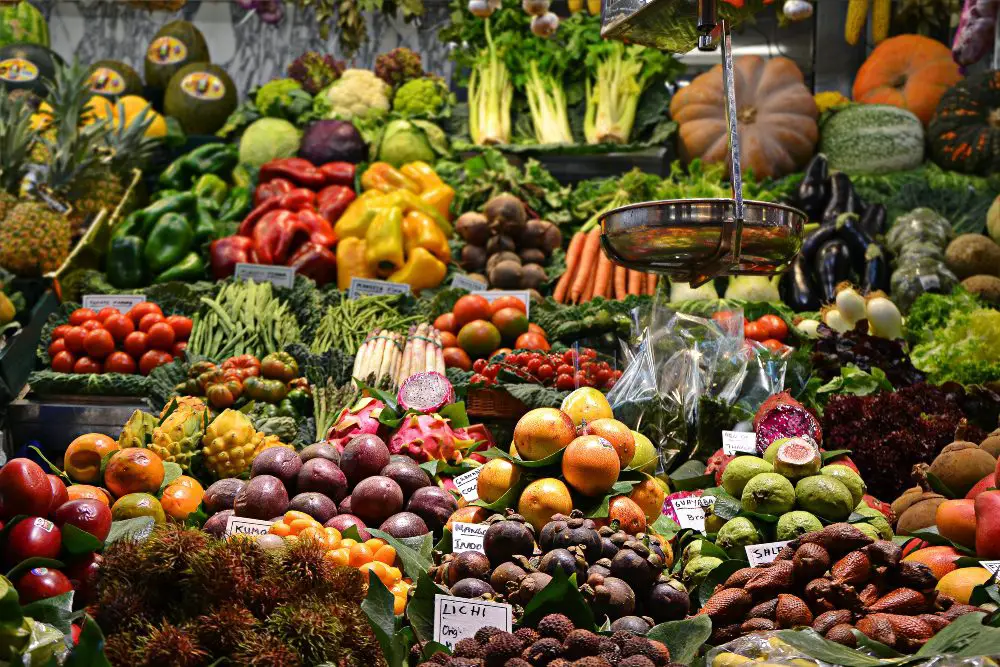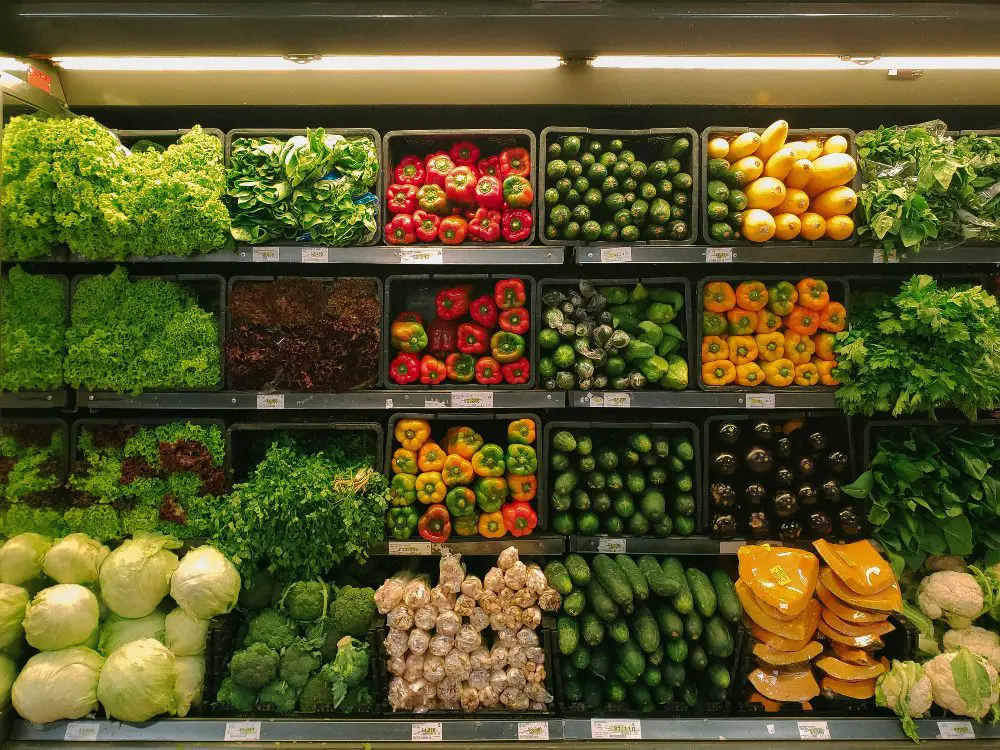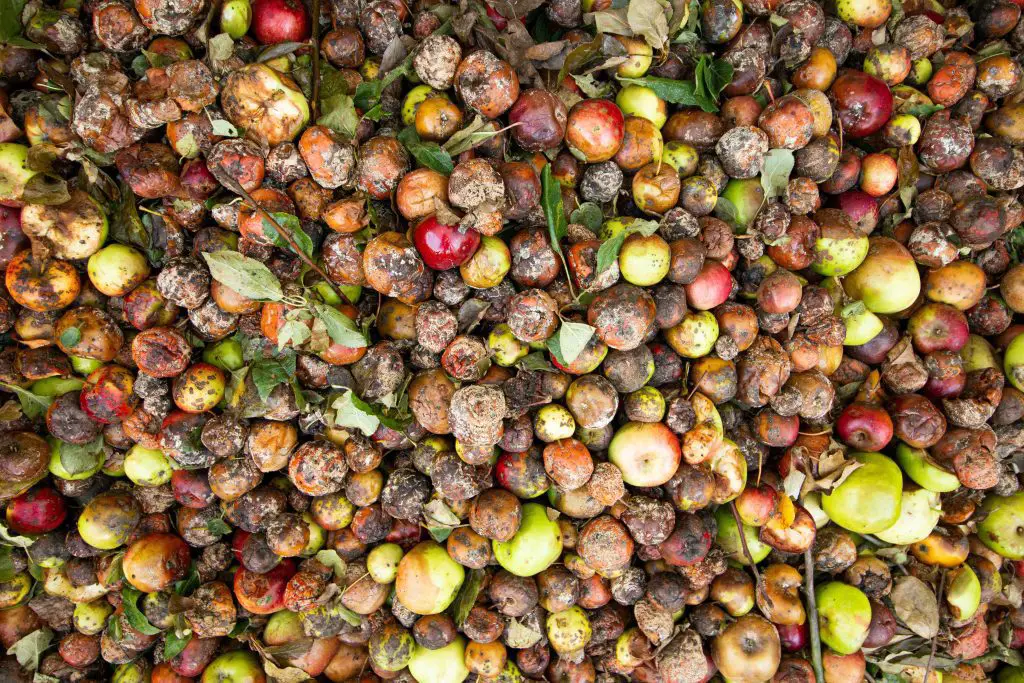Food’s carbon footprint is critical in our quest for a sustainable future. It refers to the greenhouse gas emissions produced by our food’s production, processing, transportation, and consumption. Understanding food’s carbon footprint helps us make informed choices that benefit our health and planet.
This article dives into the carbon footprint of 15 popular dishes, providing insights for those looking to reduce their environmental impact through dietary choices.
Contents
- 1 Understanding Food’s Carbon Footprint
- 2 Food’s Carbon Footprint in Popular Dishes
- 3 Local vs. Imported Foods
- 4 Organic vs Conventional Farming
- 5 Future Trends in Food Production
- 6 FAQ on Food’s Carbon Footprint
- 6.1 What is Food’s Carbon Footprint?
- 6.2 Why Does Beef Have a Higher Carbon Footprint Than Poultry?
- 6.3 Can Eating Seafood Be Environmentally Friendly?
- 6.4 How Do Vegetarian Diets Impact Food’s Carbon Footprint?
- 6.5 Are processed foods bad for the environment?
- 6.6 What’s the difference between organic and conventional farming regarding carbon footprint?
- 6.7 What are the future trends in reducing food’s carbon footprint?
- 7 Conclusion
Understanding Food’s Carbon Footprint
In an age where environmental awareness is paramount, ‘food’s carbon footprint’ is a crucial term. It encapsulates the greenhouse gas emissions from the entire food journey – from farm to fork. This includes all stages: production, processing, transport, consumption, and waste.
This part of the article will illuminate the essence of food’s carbon footprint, delve into the elements that shape it, and underscore its significance in our everyday choices.
What is Food’s Carbon Footprint?
Picture the journey of your food as a story, where each chapter adds its emissions – these are the pages of food’s carbon footprint. It’s a tale of the gases released throughout a food item’s life, notably carbon dioxide, methane, and nitrous oxide.
The narrative includes everything from the cultivation of crops or livestock rearing, the voyage food takes to reach markets, the processing it undergoes, how it’s stored, how we cook it, and finally, how we dispose of it.
Each food item authors its unique carbon story, influenced by the methods used in its production, the miles it travels to reach us, and the methods we use to keep it fresh. Understanding this story is vital – it helps us see the environmental impact hidden in our meals and guides us to make choices that favor a healthier planet.
How Dishes Give out Food’s Carbon Footprint
- Type of Food Production: The method of food production plays a crucial role. For instance, meat production, especially beef, has a higher carbon footprint than plant-based foods. This is due to the methane emissions from cattle and the extensive land and water resources required.
- Transportation: The distance food travels from farm to plate significantly increases its carbon footprint. Locally sourced food typically has a lower carbon footprint than imported food, which requires air or long-distance road transport.
- Processing and Packaging: Processed foods often have a higher carbon footprint due to the energy and materials used for processing.
- Agricultural Practices: Using fertilizers, pesticides, and water for irrigation in farming can add to the carbon footprint of food. Organic and sustainable farming practices tend to have a lower environmental impact.
- Waste: Food waste contributes to the carbon footprint, as discarded food generates methane, a potent greenhouse gas when it decomposes in landfills.

The Importance of Considering Food’s Carbon Footprint
Understanding and considering food’s carbon footprint is vital for several reasons:
- Environmental Impact: The food sector is a major contributor to global greenhouse gas emissions. Understanding and acting on food’s carbon footprint can significantly reduce our environmental impact.
- Climate Change Mitigation: Reducing the carbon footprint of our diets is crucial in the fight against climate change. Choosing foods with lower carbon footprints can help slow down global warming.
- Resource Conservation: Knowing about food’s carbon footprint helps conserve resources like water and land, which are heavily used in food production.
- Promoting Sustainable Agriculture: Focusing on food’s carbon footprint encourages more sustainable agricultural practices that benefit the environment.
- Health Benefits: Often, foods with a lower carbon footprint, such as plant-based options, are also healthier, promoting overall well-being.
- Economic Efficiency: Reducing food’s carbon footprint can also lead to more economically efficient food production and consumption patterns.

Food’s Carbon Footprint in Popular Dishes
Various dishes have a specific impact on the environment due to how their ingredients are sourced. Below are the food’s carbon footprint of different kinds of dishes.
Beef-Based Dishes
Beef is a staple in many diets worldwide, known for its rich flavor and nutritional value. However, beef is often highlighted for its significant environmental impact when discussing food’s carbon footprint. This section delves into why beef-based dishes have a high carbon footprint and provides insights into some common beef dishes and their environmental implications.
High Carbon Footprint of Beef Production
Beef production is one of the most carbon-intensive forms of food production. Several factors contribute to this:
Methane Emissions: Cattle produce methane, a potent greenhouse gas, during digestion. Methane has a much greater impact on global warming compared to carbon dioxide.
Land Use: Beef production requires large land for grazing and growing feed crops. This often leads to deforestation, further contributing to food’s carbon footprint.
Water Usage: Beef production is water-intensive. It takes significantly more water to produce a kilogram of beef than plant-based foods.
Feed Production: Growing feed for cattle involves using fertilizers and pesticides, which add to the environmental impact.
Common Beef Dishes and Their Carbon Footprint
When considering food’s carbon footprint, it’s helpful to look at specific beef dishes:
- Beef Burger: A classic beef burger has a high carbon footprint, mainly due to the beef patty. The production of one kilogram of beef can emit over 27 kilograms of CO2-equivalents.
- Steak: The carbon footprint of a steak depends on the cut and the cooking method, but it’s generally high due to the resource-intensive nature of beef production.
- Beef Stew: Although beef stew often includes vegetables, the beef component still makes its carbon footprint significant.
- Roast Beef: A popular dish in many cultures, roast beef’s carbon footprint is high, especially considering the energy used in cooking.
Reducing Food’s Carbon Footprint with Beef Alternatives
To reduce food’s carbon footprint, considering alternatives to beef-based dishes is important:
- Plant-Based Alternatives: With advancements in food technology, many plant-based products mimic the taste and texture of beef.
- Sustainable Beef: Choosing beef from sustainable sources, such as grass-fed or organic farms, can slightly lower food’s carbon footprint.
- Reduced Consumption: Simply reducing the frequency of consuming beef dishes can have a significant impact on reducing food’s carbon footprint.
Poultry Dishes
Poultry, including chicken, turkey, and other birds, is a popular alternative to red meat in many diets. While poultry has a smaller carbon footprint than beef, it still contributes to food’s carbon footprint. This section explores the environmental impact of poultry dishes and how they rank in terms of food’s carbon footprint.
Comparing Poultry’s Carbon Footprint with Beef
Poultry’s carbon footprint is considerably lower than that of beef for several reasons:
- Efficient Feed Conversion: Birds are generally more efficient than cattle at converting feed into body mass, resulting in lower resource use and emissions.
- Shorter Lifespans: Poultry has a shorter lifespan than cattle, leading to quicker production cycles and less resource consumption.
- Lower Methane Emissions: Birds do not produce methane as part of their digestive process, unlike cattle, which significantly reduces greenhouse gas emissions.
Popular Poultry Dishes and Their Environmental Impact
Various poultry dishes have different carbon footprints, influenced by the type of bird, cooking method, and additional ingredients:
- Grilled Chicken Breast: A simple chicken breast has a relatively low carbon footprint. The simplicity of the dish and the efficient cooking method contribute to this.
- Turkey Roast: A typical turkey roast, popular during festive seasons, has a higher carbon footprint due to the size of the bird and the energy used in cooking. However, it’s still lower than equivalent beef dishes.
- Chicken Curry: The carbon footprint of chicken curry depends on the cooking method and the other ingredients used. Generally, it’s considered a lower carbon footprint option than beef curry.
- Fried Chicken: The carbon footprint of fried chicken is increased by the cooking process, which requires a significant amount of energy, usually from oil.
Ways to Reduce Food’s Carbon Footprint with Poultry
To further reduce food’s carbon footprint when consuming poultry dishes:
- Choose Sustainable Sources: Opt for poultry from farms that use sustainable practices, such as free-range or organic farming. You can also choose to build chicken coops and cultivate your own poultry farm, which significantly lowers your carbon footprint. With Easy Coop, you can enjoy free-range chickens right in your own home.
- Cooking Methods: Choose cooking methods that require less energy, like grilling or baking, over deep frying.
- Portion Control: Consume poultry in moderation to reduce food consumption and waste, minimizing food’s carbon footprint.
Seafood and Its Carbon Footprint
Seafood is a diverse category in the culinary world, ranging from fish to shellfish. It’s cherished for its taste and nutritional benefits. However, the carbon footprint of seafood varies widely, making it a complex subject in the discussion of food’s carbon footprint. We examine the different types of seafood and their environmental impacts.
Carbon Footprint of Various Types of Seafood
The carbon footprint of seafood depends on several factors:
Wild-Caught vs. Farmed: Wild-caught seafood often has a lower carbon footprint than farming, especially for species requiring less energy-intensive fishing methods. However, some fishing practices can be environmentally damaging.
Type of Seafood: Shellfish like mussels and oysters generally have a lower carbon footprint than larger fish like salmon or tuna. The latter often require more resources for their growth and transportation.
Fishing Practices: The methods used to catch fish significantly impact food’s carbon footprint. Sustainable fishing practices that minimize bycatch and habitat destruction are preferable.
Transportation and Processing: Seafood flown across long distances or heavily processed has a higher carbon footprint.

Sustainable Seafood Choices
Making sustainable seafood choices can significantly reduce food’s carbon footprint:
- Locally Sourced Seafood: Choosing local seafood for your area reduces transportation emissions.
- Seasonal Seafood: Eating seafood during its natural harvesting season can lower the food’s carbon footprint.
- Eco-Labeled Seafood: Look for certifications like the Marine Stewardship Council (MSC) label, which indicates sustainable fishing practices.
Examples of Seafood with Varying Carbon Footprints
- Salmon: Farmed salmon typically has a higher carbon footprint due to the resources needed for aquaculture. Wild salmon has a lower footprint but can vary based on fishing practices.
- Shrimp: Farmed shrimp, especially from tropical regions, can have a high carbon footprint due to destructive farming practices and long transportation distances.
- Mussels and Oysters: These shellfish are often farmed sustainably and can have a positive environmental impact by filtering water, resulting in a low carbon footprint.
Vegetarian Dishes
Vegetarian dishes are often highlighted for their environmental benefits, particularly in discussions about reducing food’s carbon footprint. This section explores how vegetarian diets contribute to lower carbon emissions and examines the carbon footprint of some common vegetarian dishes.
Environmental Benefits of Vegetarian Diets
Vegetarian diets typically have a lower carbon footprint compared to diets containing meat. Key reasons include:
- Lower Methane Emissions: Since vegetarian diets exclude meat, they don’t contribute to the methane emissions associated with livestock.
- Reduced Land and Water Use: Plant-based foods require less land and water than meat production.
- Lower Energy Requirements: Growing and processing plant-based foods often consumes less energy than meat production.
Carbon Footprint of Common Vegetarian Dishes
The carbon footprint of vegetarian dishes varies depending on ingredients, cooking methods, and sourcing:
- Stir-Fried Vegetables: This dish typically has a low carbon footprint, especially if using locally sourced, seasonal vegetables.
- Vegetarian Pasta: The carbon footprint can vary. Whole-grain pasta and fresh vegetables have a lower footprint than highly processed ingredients.
- Bean or Lentil Stew: Legumes like beans and lentils have a very low carbon footprint and are highly nutritious, making them an excellent choice for environmentally conscious eaters.
- Vegetarian Burgers: Made from ingredients like beans, grains, and vegetables, these often have a lower carbon footprint than their meat counterparts. However, highly processed vegetarian burgers may have a higher footprint.

Processed Foods and Snacks
Processed foods and snacks are integral to many diets, offering convenience and variety. However, their impact on food’s carbon footprint is significant and often overlooked. Below is an examination of how processed foods and snacks contribute to overall carbon emissions and offers insights into their environmental implications.
How Processing Affects Food’s Carbon Footprint
The processing of food can substantially increase its carbon footprint due to various factors:
- Energy Usage: Processing often involves high energy consumption for cooking, drying, freezing, and packaging.
- Resource Intensive Packaging: Processed foods typically require more packaging, which adds to the carbon footprint by using plastics and other materials.
- Transportation: Processed foods are often transported long distances from manufacturing plants to retailers, adding to their carbon footprint.
- Preservatives and Additives: The production and use of preservatives and additives in processed foods can contribute to higher carbon emissions.
Snack Foods and Their Environmental Impact
Snack foods, ranging from chips to sugary treats, have varying impacts on food’s carbon footprint:
- Potato Chips: Potato chips involve significant energy in frying and packaging, leading to a higher carbon footprint.
- Packaged Cookies and Cakes: These snacks require energy-intensive processing and often contain ingredients with high carbon footprints, like palm oil.
- Candy and Chocolate: The production of these treats involves extensive processing and often includes ingredients like cocoa and sugar, which can have high environmental impacts depending on their source.
Alternatives to Reduce Food’s Carbon Footprint
To mitigate the impact of processed foods and snacks on food’s carbon footprint, consider the following:
- Homemade Snacks: Preparing snacks at home can greatly reduce the carbon footprint by eliminating the need for extensive processing and packaging.
- Minimally Processed Foods: Choose less processed snacks, such as whole fruits, nuts, or homemade baked goods.
- Sustainable Packaging: Opt for products with eco-friendly packaging to minimize environmental impact.
- Mindful Consumption: Be aware of the quantity and frequency of processed snack consumption to reduce food waste and carbon footprint.
Local vs. Imported Foods
The debate between local and imported foods is a significant aspect of discussions surrounding food’s carbon footprint. This section contrasts these two food sources, examining how each impacts food’s carbon footprint, and explores the nuances of making sustainable food choices.
The Role of Transportation in Food’s Carbon Footprint
Transportation is a key factor in determining food’s carbon footprint. The distance food travels from production to consumption contributes significantly to its environmental impact.
Local Foods
- Reduced Transportation Emissions: Local foods travel shorter distances, reducing transportation-related emissions.
- Seasonal Eating: Local foods are often consumed in season, which can reduce the need for energy-intensive storage and transportation.
- Community Impact: Buying local supports local economies and can promote sustainable agricultural practices.
Imported Foods
- Higher Transportation Emissions: Imported foods often travel long distances by plane or ship, which increases food’s carbon footprint.
- Year-Round Availability: Importation allows for the availability of off-season foods, but this can come at an environmental cost.
- Global Diversity: Imported foods provide access to a wide variety of foods that may not be available locally.
The Benefits of Local Food Choices
Local food choices can offer several environmental benefits:
- Reduced Carbon Emissions: Less transportation means a lower carbon footprint.
- Fresher Produce: Local foods are often fresher and don’t require long storage and transportation periods.
- Promoting Sustainable Practices: Local consumers can influence producers to adopt more sustainable practices.
The Complexity of Imported Food’s Carbon Footprint
Imported foods have their complexities when it comes to food’s carbon footprint:
- Diverse Sources: Foods imported from different regions have varying carbon footprints based on production and transportation methods.
- Economic Considerations: For some regions, exporting food is a crucial part of the economy, and sustainable practices can be encouraged through informed consumer choices.
Organic vs Conventional Farming
The organic versus conventional farming debate is taking center stage. This exploration delves into how these two agricultural paths diverge in their environmental impacts and their influence on the carbon trail left by our food.
Organic Farming and Its Impact on Food’s Carbon Footprint
Organic farming paints a picture of harmony with nature, sidestepping synthetic fertilizers and pesticides. It’s a method that embraces biodiversity, rotates crops to keep the soil healthy, and relies on natural means for nurturing the land. This approach often results in healthier soil ecosystems and reduced reliance on chemical inputs.
Advantages
- Reduced Chemical Use: The absence of synthetic fertilizers and pesticides in organic farming means fewer emissions associated with their production and application.
- Enhanced Soil Health: Organic practices improve soil health and can increase carbon sequestration, potentially reducing food’s carbon footprint.
- Biodiversity: Organic farms often support higher levels of biodiversity, which can contribute to a more balanced ecosystem.
Challenges
- Lower Yields: Organic farming typically has lower yields compared to conventional farming, which can lead to a higher carbon footprint per unit of produce.
- Land Use: Due to lower yields, organic farming may require more land to produce the same amount of food, potentially leading to a higher overall carbon footprint.
Conventional Farming and Food’s Carbon Footprint
Conventional farming relies on synthetic fertilizers and pesticides and often employs monoculture practices. It is geared towards maximizing yields and efficiency.
Advantages
- High Yields: Higher productivity per acre can mean a lower carbon footprint per food unit produced.
- Efficiency in Land Use: Efficient land use can reduce the need for additional deforestation or land conversion.
Challenges
- Chemical Emissions: The production and use of synthetic fertilizers and pesticides contribute to greenhouse gas emissions.
- Soil Degradation: Intensive farming practices can lead to soil degradation, reducing its ability to sequester carbon.
Future Trends in Food Production
As we navigate the pressing issues of climate change and environmental sustainability, the future of food production sketches a vision focused on trimming down food’s carbon footprint. We’re witnessing a wave of innovations and emerging trends poised to redefine our food systems. From high-tech farming methods to shifts in consumer preferences, these developments aim to carve a path toward a greener, more sustainable future in food production.
Innovations Reducing Food’s Carbon Footprint
- Alternative Proteins: The rise of plant-based protein sources and lab-grown meats offers a sustainable alternative to traditional livestock farming, significantly reducing food’s carbon footprint.
- Resource Efficiency: These alternatives require fewer natural resources like land and water and produce fewer emissions.
- Data-Driven Farming: Utilizing data and AI to optimize farming practices can lead to more efficient use of resources, reducing food’s carbon footprint.
- Targeted Use of Inputs: Precision agriculture allows for the targeted use of water, fertilizers, and pesticides, minimizing waste and emissions.
- Space Efficiency: Growing food in vertical farms in urban areas reduces the need for land and can decrease transportation emissions.
- Controlled Environments: These farming methods use controlled environments to maximize efficiency and can operate year-round, reducing food’s carbon footprint.
Predictions for Sustainable Food Practices
- Consumer Awareness: As awareness of food’s carbon footprint grows, consumer demand for sustainable food options is likely to increase.
- Regenerative Agriculture: Practices that restore and enhance natural ecosystems, improving soil health and carbon sequestration, are becoming more prevalent.
- Renewable Energy in Food Production: Integrating renewable energy sources in food production and processing can significantly reduce food’s carbon footprint.
- Innovations in Packaging: Developments in biodegradable and recyclable packaging materials can reduce waste and emissions associated with food packaging.
Challenges and Opportunities
- Meeting Global Demand: One of the biggest challenges will be to meet the increasing global food demand while reducing food’s carbon footprint.
- Economic Factors: The cost and accessibility of sustainable food options remain significant barriers to address.
- Global Cooperation: Tackling food’s carbon footprint requires cooperation involving governments, industry, and consumers.
- Education and Policy: Public education and supportive policies are crucial to promote sustainable food production practices.
FAQ on Food’s Carbon Footprint
What is Food’s Carbon Footprint?
Imagine the journey of your food as a continuous flow of energy and emissions. Food’s carbon footprint is this flow, charting the greenhouse gas emissions from when a seed is planted to when leftovers are discarded. It’s a comprehensive assessment of the environmental impact embedded in different foods and diets, tracking how every step in the food lifecycle contributes to the overall emissions.
Why Does Beef Have a Higher Carbon Footprint Than Poultry?
Beef’s heftier carbon footprint comes down to a few key factors. Firstly, cattle are like factories for methane, a greenhouse gas far more potent than carbon dioxide. They also have a bigger appetite for land and water, making their sustenance more resource-heavy.
Can Eating Seafood Be Environmentally Friendly?
Indeed, the carbon footprint of seafood can tread lightly, especially when choices are made sustainably. Fish and shellfish that are locally caught or responsibly farmed, like mussels and oysters, often leave a smaller environmental mark. However, this isn’t a blanket rule.
How Do Vegetarian Diets Impact Food’s Carbon Footprint?
Vegetarian diets weave a different environmental tale. These diets sidestep the hefty emissions associated with livestock rearing by forgoing meat. Plant-based foods generally sprout from a lower resource foundation – they often need less land, water, and energy, making the carbon story of a vegetarian plate typically less impactful.
Are processed foods bad for the environment?
Processed foods can have a higher carbon footprint due to the energy used in processing, packaging materials, and often longer transportation distances. Choosing minimally processed foods can help reduce food’s carbon footprint.
What’s the difference between organic and conventional farming regarding carbon footprint?
Organic farming, with its rejection of synthetic aids and its nurturing of the soil, tends to produce less chemical emissions. However, this approach might not always be the most bountiful, potentially leading to a higher carbon footprint per harvested unit. In contrast, conventional farming stands out for its land-use efficiency.
What are the future trends in reducing food’s carbon footprint?
Future trends include the rise of plant-based and lab-grown meats, precision agriculture, vertical and urban farming, renewable energy in food production, and sustainable packaging. Consumer awareness and demand for sustainable options are also driving change.
Conclusion
Exploring food’s carbon footprint across various categories sheds light on our dietary choices’ profound environmental impact. Understanding these impacts is crucial in the face of climate change and environmental degradation. As consumers, our choices in what and how we eat can significantly reduce our global carbon footprint.






